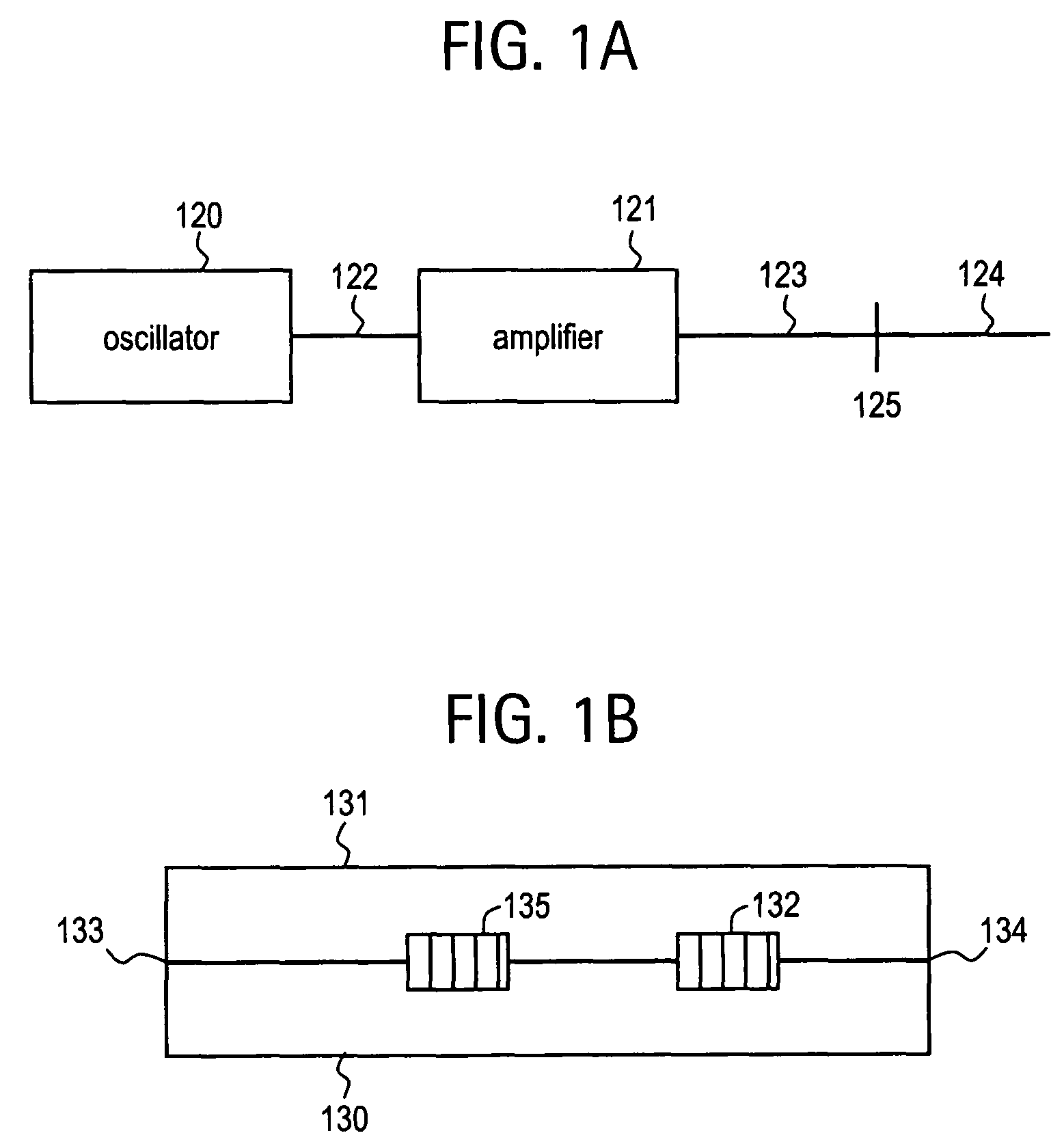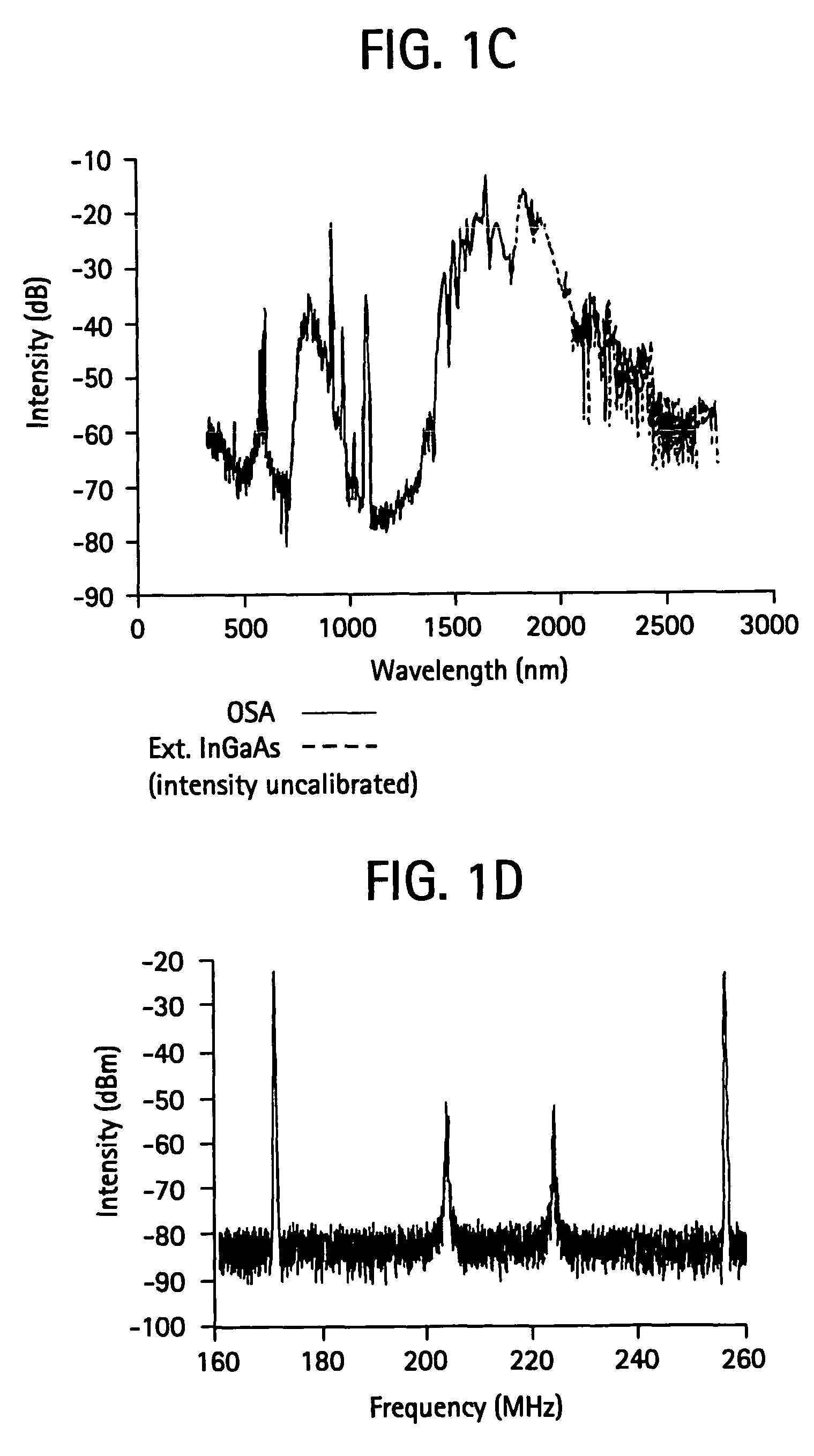Laser based frequency standards and their applications
a frequency standard and laser technology, applied in the field of frequency standards, can solve the problems of pulse stability problems, inability to teach a method of producing a low noise frequency comb source, and other prior art modelocked fiber lasers are either limited in repetition rate or achievable timing jitter, etc., to achieve the effect of minimizing the loss of frequency precision
- Summary
- Abstract
- Description
- Claims
- Application Information
AI Technical Summary
Benefits of technology
Problems solved by technology
Method used
Image
Examples
Embodiment Construction
[0032]For most applications of frequency combs, low noise operation of frequency comb lasers is preferred. Low noise dispersion compensated frequency comb sources are described in Fermann et al. '302, which is herein incorporated by reference. Applications of frequency comb sources as described in Fermann '302 greatly benefit from the availability of frequency combs that actually span more than one octave in the optical frequency spectrum.
[0033]The generic design for an octave spanning comb source is shown in FIG. 1a. Such an octave spanning source typically comprises a modelocked fiber oscillator, whose output is further amplified in additional fiber amplifiers, where the amplified output is then injected into highly nonlinear fibers. An octave spanning spectrum typically is achieved once the output from the oscillator reaches the highly nonlinear fiber.
[0034]Here, oscillator 120 represents an oscillator design as previously described in the '302 publication. However, any other osc...
PUM
 Login to View More
Login to View More Abstract
Description
Claims
Application Information
 Login to View More
Login to View More - R&D
- Intellectual Property
- Life Sciences
- Materials
- Tech Scout
- Unparalleled Data Quality
- Higher Quality Content
- 60% Fewer Hallucinations
Browse by: Latest US Patents, China's latest patents, Technical Efficacy Thesaurus, Application Domain, Technology Topic, Popular Technical Reports.
© 2025 PatSnap. All rights reserved.Legal|Privacy policy|Modern Slavery Act Transparency Statement|Sitemap|About US| Contact US: help@patsnap.com



